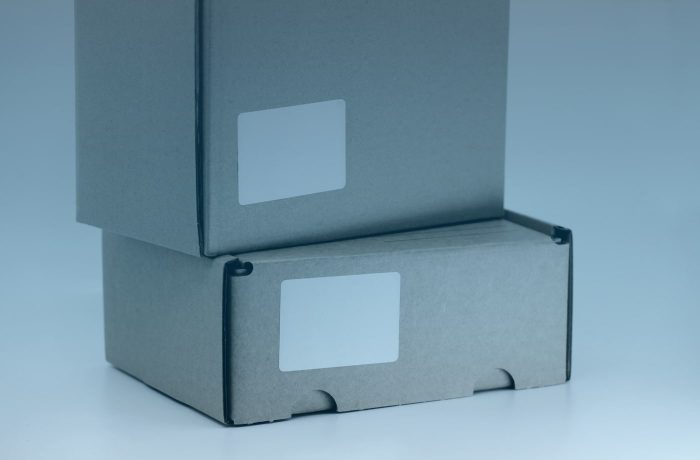With many business ventures, you have to invest a lot of money upfront without any guarantee that your business will succeed.
By choosing dropshipping, you don’t have to risk all your money — you can get started with a minuscule budget and by investing only a few hours of your time weekly.
First-time entrepreneurs often prefer this business model to others — it’s just easy to get started and doesn’t require paying for a warehouse or showroom.
So how does dropshipping work in practice, and how can you get started with it? We are going to explain it in this article.
What is dropshipping?
Dropshipping is a business model that lets you sell to your customers without physically owning inventory.
Unlike with a traditional store where you purchase items first and pay for warehouse storage and showrooms, with dropshipping, these operational costs are absent.
So how does it work? Whenever a customer places an order, you send a notice to a supplier who prepares and sends items to the customer’s address.
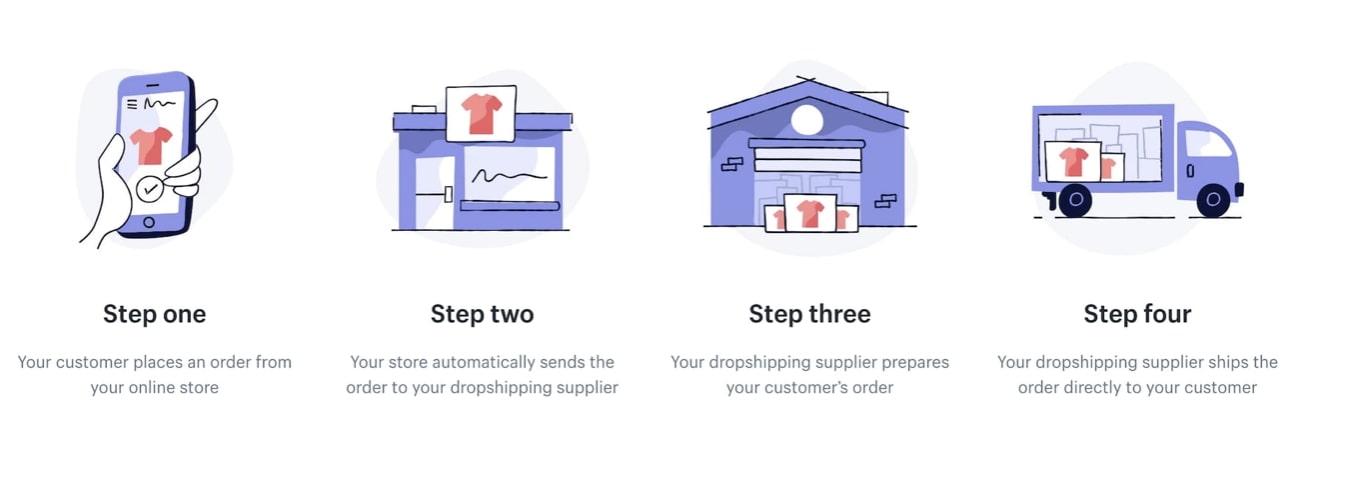
It’s not you who is responsible for producing products, carrying the cost of running warehouses, sending goods to customers, and processing returns. That’s the role of a supplier.
Your biggest responsibility is picking the right products that customers will want to buy, attractively presenting them on your website, and being responsible for marketing.
You also have to build a brand and its visual identity as you sell supplier’s products under your name.
With a dropshipping model, you receive money before you pay your supplier, and as a result, you don’t pay upfront for the inventory. Does it mean you can cross the break-even point in no time and start earning a lot of money right away? Let’s see if dropshipping can become a profitable business fast.
Is dropshipping profitable?
Dropshipping can become a profitable business venture if you select the right suppliers and set the right margins on the products you are selling.
As you carry only little operational costs and don’t pay for the inventory before a customer places an order and pays for it, there are low risks of losing money in case of a business failure.
While you don’t invest much in the beginning, growing a profitable dropshipping business requires time — it’s not an overnight success. To start earning, you have to successfully deal with a growing price for products, high shipping costs, refunds, and other issues that can crop up with this business model.
One of the key problems in dropshipping businesses is retention, as customers often purchase only once. The main issue lies with customer support which is usually poor. It takes time, effort, and additional resources to establish high customer support standards in an online store.
However, once you overcome this and other issues, you can build a sustainable business with low costs and high profitability.
So how can you start earning without initial investment while doing dropshipping? Let’s review the steps you have to take to build a successful and profitable dropshipping business.
How to start a dropshipping business
Starting a dropshipping business doesn’t require a lot of effort, and you can even develop this business on the side while still working a 9-to-5 job. While the barrier of entry is rather low — both in terms of time and money — dropshipping businesses don’t always succeed.
To help you avoid costly mistakes at the beginning of your dropshipping journey, we have prepared this step-by-step guide that will get you ready for your new venture. Let’s have a quick look at what needs to be done to land your first dropshipping sale.
- Choose a dropshipping idea
- Research your competitors
- Source suppliers
- Launch your website
- Promote your store
- Optimize your product offering
1. Choose a dropshipping idea
Choosing the best dropshipping products to sell is the first step in creating a dropshipping business.
To shortlist the products you want to sell, start with good research — find out who sells similar products and evaluate the market potential. The research phase boils down to this — you need to get a bit more certainty about the market potential for the products you pick for your store.
After the research phase, analyze your findings — product lists and competitor analysis — and make a decision on what niche you are going to choose. So what does a niche mean in dropshipping?
Here are some examples of niche products:
- wigs
- massage guns
- bead bracelets
- padded headbands
You might be wondering how you can learn if a product you want to sell is popular. Well, there are already several tools that can help you make a decision based on data, not gut feeling.
For example, you can use Ahrefs to evaluate the monthly number of searches for a keyword and its difficulty to rank online.
Here is what Ahrefs shows for the word “bead bracelets.” There are almost 30k searches monthly, and this keyword is rather easy to rank on Google. It might give you the idea that bead bracelets could be a good product to sell.
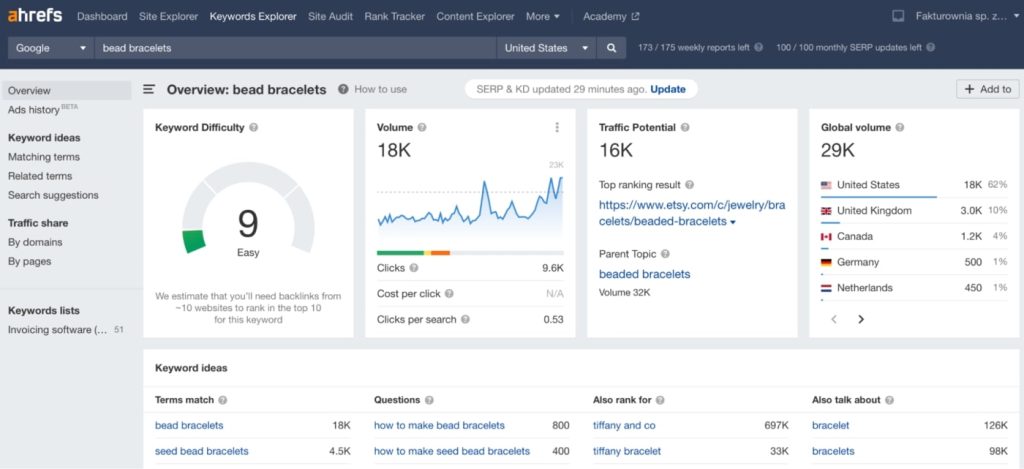
Google Trends is another tool that can help evaluate keyword popularity and find out if there is a growing demand for a product.
Here is an example of trends for the phrase “bead bracelets.”

Once you have picked a few products that are popular among consumers, it’s time to dig a bit deeper and analyze who is already selling these products. Check out what they are doing well, and what could be improved in their strategy.
2. Research your competitors
Analyzing your competitors can help you learn about their tactics when it comes to picking products and marketing. This process also provides you with the inspiration to create your business strategy.
Carrying out competitor research shouldn’t be a difficult task if you are using an Excel sheet to collect and analyze information. Here is how you should work with it.
First, look around for dropshipping businesses selling the products you have picked. Then, choose 3-5 websites to perform an analysis — you might want to focus on both small and big competitors.
The next step would be creating an Excel sheet and setting up criteria for your analysis. It’s worth analyzing a competitor’s website, offering, pricing, and marketing — to mention just a few.
Once you are finished with the competitor analysis, it’s time to hold a brainstorming session with the Excel sheet in front of you and draft your dropshipping strategy. Remember that your strategy shouldn’t be a copycat of your competitor’s tactics.
Their strategy should only serve as an inspiration for working out your unique approach to marketing your dropshipping products. You can choose the same marketing channels to promote your store, but you still have to think of ways to deliver a better experience to your customers.
3. Source suppliers
Finding suppliers that offer high-quality products at a good price is a key step to launching a profitable dropshipping business.
There are various ways you can approach sourcing suppliers. Here are just some of them:
Trade shows
Attending trade shows dedicated to dropshipping businesses is a traditional way to find suppliers. The importance of trade shows is still high in this industry as it’s often better to see a business partner face-to-face to establish trust.
Search on Google
Dropshipping suppliers usually don’t spend much on marketing, and many of them won’t have an indexed website on Google. However, some of them do. To locate them online, experiment with different search terms while doing your research on Google.
Use dropshipping suppliers’ websites
You can save time on research by using websites such as AliExpress or DHGate that list dropshipping suppliers by niche. Some websites vet suppliers before placing them in the directory.
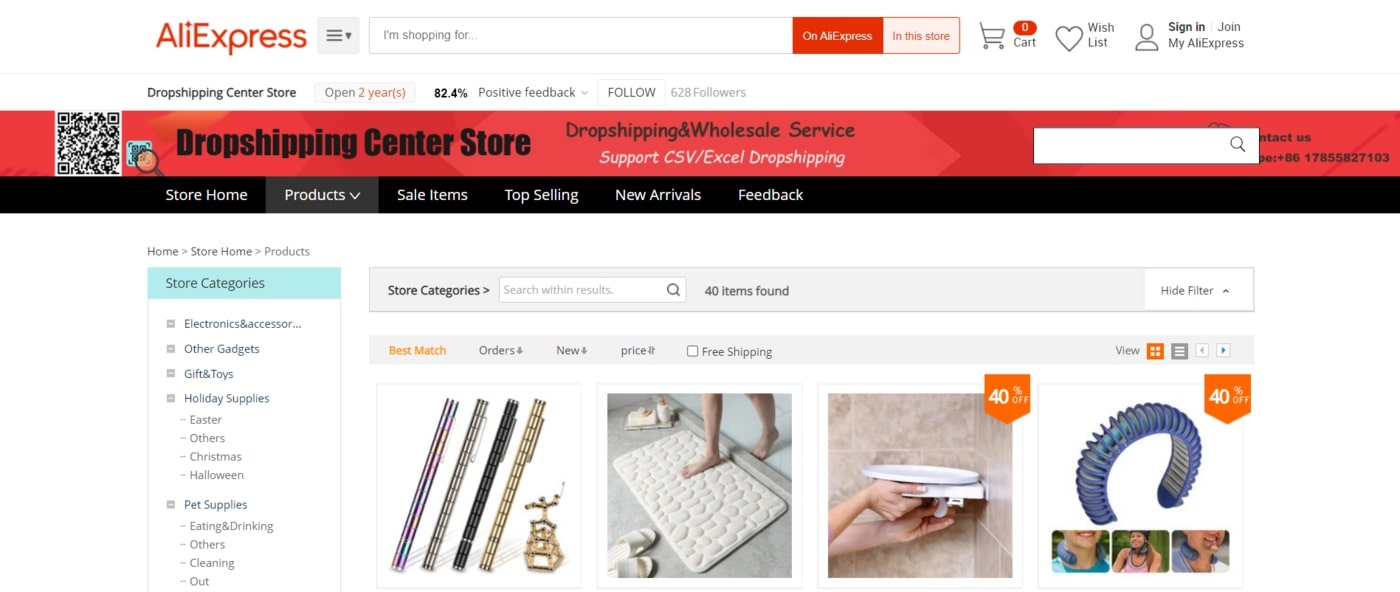
Here is a list of the most popular websites listing suppliers:
- AliExpress
- SaleHoo
- Sunrise Wholesale
- Inventory Source
- Worldwide Brands
- Megagoods
- Wholesale2B
Order from competitors
You can learn what suppliers your competitors are using by placing an order in their online store. Once you receive a package, you can check a return address for the items — this will point you to the supplier.
4. Launch your website
After you have defined your idea, drafted your marketing strategy, and picked suppliers, it’s time to create a website for your online store.
Your website is a place where customers view and buy your products. To ensure they don’t encounter any bugs or issues in this process, you have to focus on choosing the right platform for your website and properly test it before launching.
There are various platforms that help build a dropshipping website quickly and with little technical knowledge.
For example, if you pick WordPress, you can also use a variety of WordPress dropshipping plugins, making it easy to run your store, so you don’t have to code to add new website functions or introduce improvements.
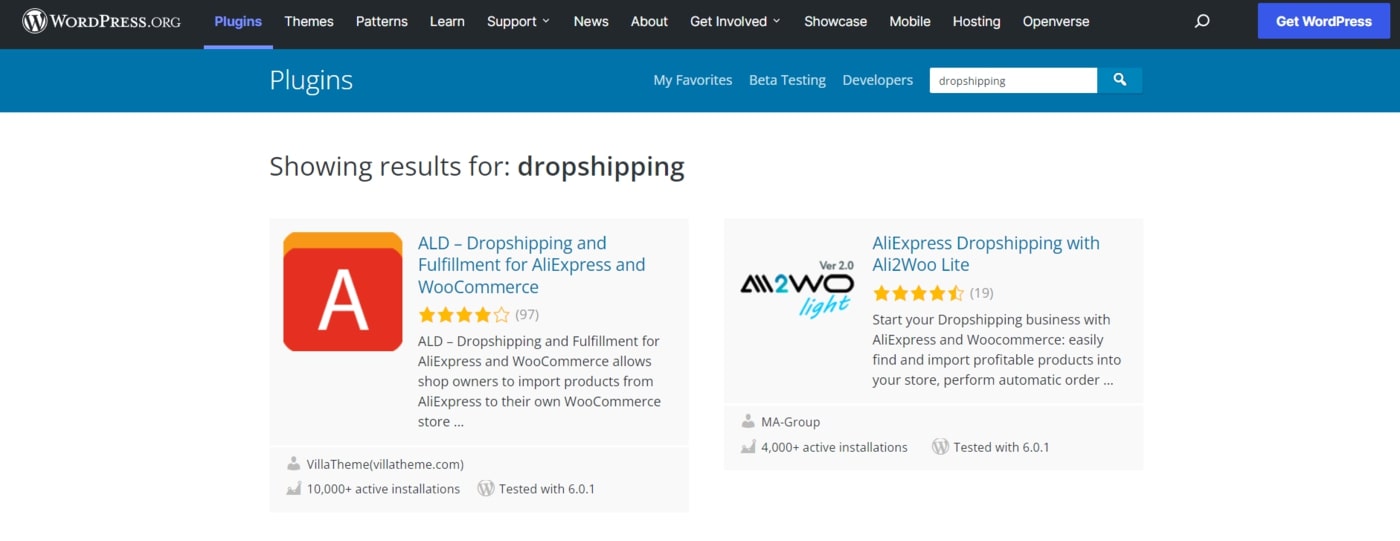
There are other platforms dedicated specifically to eCommerce businesses such as Woocommerce or Shopify.
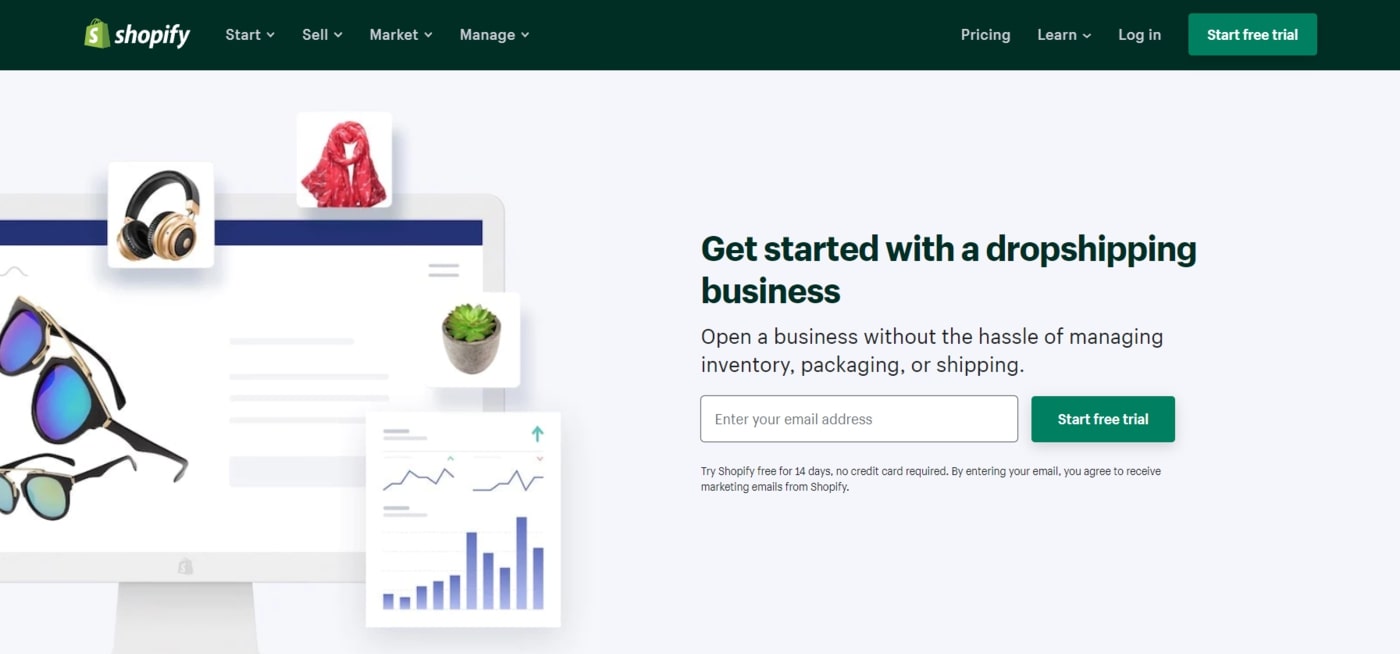
5. Promote your store
Once you hit the “publish” button and your website goes live, it’s time to move to the next stage of setting up your dropshipping business — to get the attention of your future customers and start selling.
The promotion of your dropshipping store should start with defining marketing channels. Here are some ideas you can use.
Email marketing
To get the most out of email marketing for your dropshipping business, you must find a scalable way to collect the email addresses of website visitors. It makes the most sense when you have already started driving traffic to the website using organic (SEO) or paid channels (Google Ads).
Google Ads
Google Ads is a powerful channel helping eCommerce businesses reach an audience that is ready to buy and actively evaluating product options online. If you decide to add this channel to your marketing mix, make sure you upload high-quality product photos. You can use Pixelied or similar graphic design tools for post-production of photos for ads.
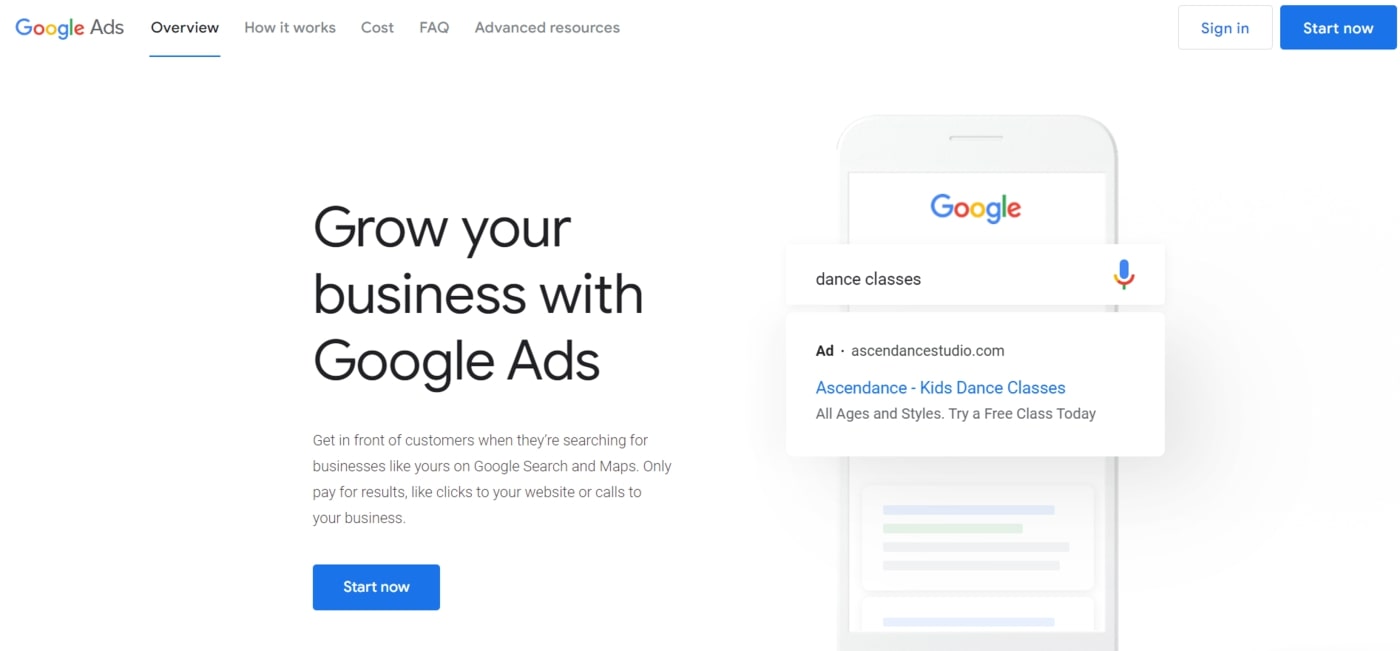
Influencer marketing
When just starting with dropshipping, you most likely won’t have an engaged community of followers on social media channels. You probably know this — building one takes time. By collaborating with influencers on platforms like Instagram and Youtube, you can get your products recommended to large communities of followers and start landing sales without years of waiting for your social media to get traction.
Content marketing
Content marketing can help establish a good position for your website in search results as it’s one of the key elements of a successful SEO strategy. To use it in your marketing strategy, start by researching the questions people ask about the topics related to your products and cover them on your blog. In blog articles, try to link to your products or refer to them in some way to direct readers to your online store.
6. Optimize your product offering
Once you have introduced the steps we have mentioned above, you will have to analyze the performance of all your channels. This will help you understand what channels you have to invest in further and which ones have to be suspended.
Over time, you will notice that most purchases come from one customer category or region. Once you see the trend, it’s worth spending more money on advertisements to reach those particular groups.
The same applies to running reports and tracking product popularity trends. Some products in your online store will be more popular compared to the majority of other products you are offering. When you see this trend, it’s worth extending your offer, finding new suppliers who offer similar products, and adding them to your store. This way, you can satisfy the demand better.
Apart from noticing important trends in demographics or customer behavior, it’s also important to always keep track of your profit margins. This way, you will know if you have already gone beyond the break-even point or still need to polish your strategy to achieve profitability.
Launching a successful dropshipping business
The entry barrier to the dropshipping industry is rather low, and anyone can try their chances with a minimum investment.
You can build your dropshipping business alongside other ventures by dedicating just a few hours to it every week.
However, not all dropshipping stores succeed. By following a step-by-step approach described in this article, you will avoid most of the mistakes beginning entrepreneurs make and will be able to build a profitable dropshipping business faster.
